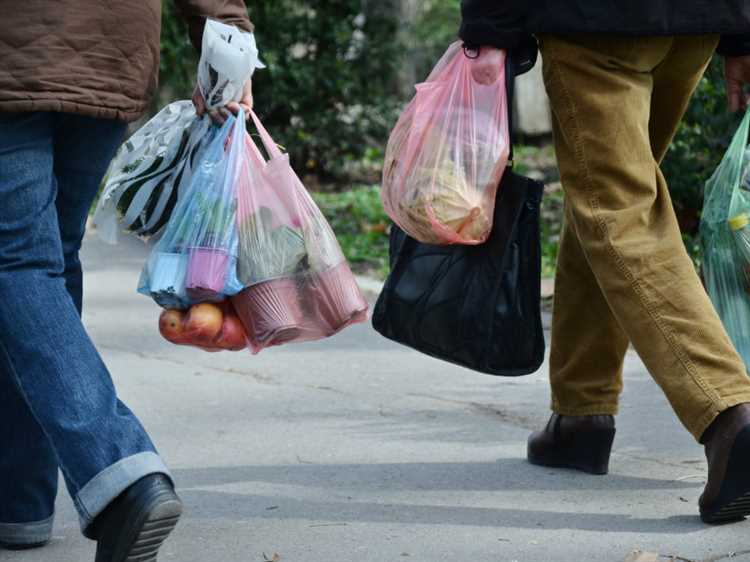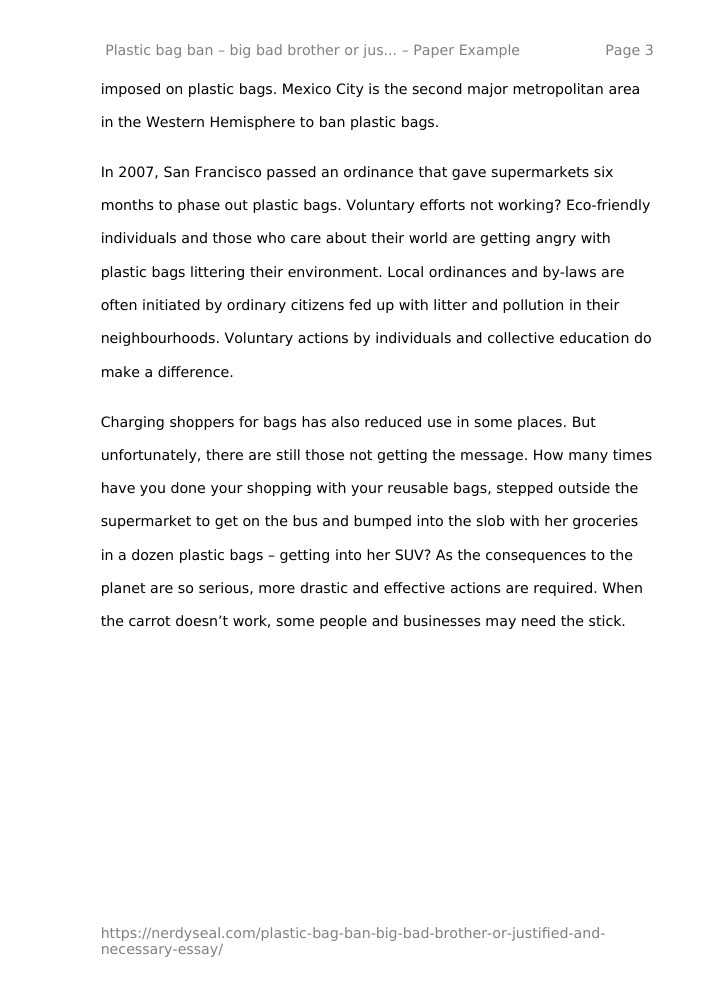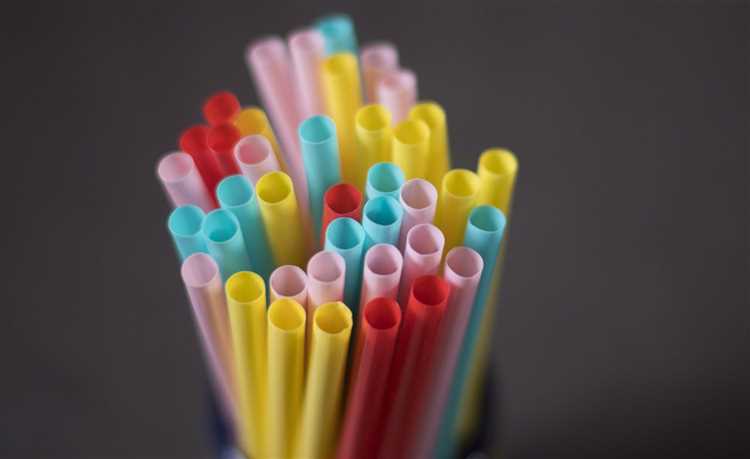
In recent years, there has been a growing concern about the environmental impact of plastic and its widespread use. Plastic pollution has become a global issue, leading many countries to implement bans and restrictions on its use. However, the question remains: is the ban on plastic justified?
Those in favor argue that the ban is necessary to protect the environment and reduce the harm caused by plastic waste. Plastic is known to take hundreds of years to degrade, and it often ends up in landfills or polluting our oceans and rivers. This not only harms wildlife, but also poses a threat to human health. The ban on plastic aims to encourage the use of more sustainable alternatives and promote a shift towards a circular economy.
On the other hand, opponents of the ban argue that plastic is an essential material that has numerous benefits. It is lightweight, durable, and cost-effective, making it ideal for a wide range of applications. They argue that a complete ban on plastic would be impractical and could have unintended consequences, such as increased use of other materials that might have even greater environmental impacts.
- The Environmental Impact of Plastic Waste
- 1. Land Pollution
- 2. Marine Pollution
- 3. Climate Change
- The Global Plastic Problem
- Plastic and Marine Pollution
- The Health Risks of Plastic
- Hormonal Disruption
- Environmental Pollution
- Alternatives to Plastic
- Biodegradable Plastics
- Reusable Containers
- The Effectiveness of Plastic Bans
- Benefits of Plastic Bans
- Criticism of Plastic Bans
- Question-answer:
- Why is there a ban on plastic?
- What are the alternatives to plastic?
- What are the arguments against banning plastic?
- Are there any countries that have successfully implemented a ban on plastic?
The Environmental Impact of Plastic Waste

Plastic waste is one of the most significant environmental challenges that the world is currently facing. The mass production and usage of plastic products have led to a widespread accumulation of plastic waste in landfills, oceans, and other natural habitats.
1. Land Pollution
Plastic does not biodegrade easily and can persist in the environment for hundreds of years. As a result, landfills are becoming overwhelmed with plastic waste, taking up valuable space and contributing to soil pollution. The presence of plastic waste in the soil can also release harmful chemicals that can seep into groundwater and enter the food chain.
Furthermore, the improper disposal of plastic waste, such as littering, can lead to the degradation of natural landscapes. It not only spoils the beauty of the environment but also poses a threat to wildlife that may mistake the plastic for food or become entangled in it.
2. Marine Pollution
Plastic waste has a devastating impact on marine ecosystems. Large amounts of plastic are dumped into oceans every year, resulting in the formation of massive “garbage patches” that harm marine life. Marine animals can mistake plastic for food, leading to internal injuries, blockages in their digestive systems, and ultimately death.
The presence of microplastics, tiny particles of plastic, in the ocean is another pressing issue. These microplastics can be ingested by small marine organisms and enter the food chain, causing harmful effects on larger marine animals and even humans who consume seafood.
3. Climate Change
The production and disposal of plastic contribute to greenhouse gas emissions and thus exacerbate climate change. The extraction of fossil fuels for the production of plastics, as well as the energy-intensive manufacturing processes, release significant amounts of carbon dioxide into the atmosphere.
Additiona
The Global Plastic Problem

In recent years, the global plastic problem has reached alarming levels. Plastic pollution has become a major environmental concern, with devastating impacts on marine life, ecosystems, and human health.
Plastic is durable and versatile, making it a popular choice for various purposes. However, its durability is also what makes it a significant problem. The material takes hundreds of years to decompose, leading to a buildup of plastic waste in landfills, oceans, and other natural habitats.
Plastic waste poses a severe threat to marine life. Many marine animals mistake plastic debris for food and end up ingesting it, leading to injury and even death. Plastic pollution also affects ecosystems, disrupting the natural balance and harming diverse plant and animal species.
Furthermore, plastic waste releases harmful chemicals into the environment as it breaks down. These chemicals can contaminate water sources and pose risks to human health. Microplastics, tiny particles of plastic, have been found in various food products and even in the air we breathe.
Awareness of the global plastic problem has grown significantly in recent years, leading to calls for action to reduce plastic use and promote more sustainable alternatives. Many countries have implemented bans or levies on single-use plastics, aiming to reduce plastic waste and encourage a shift towards more eco-friendly options.
The ban on plastic is justified considering the severe environmental and health consequences associated with plastic pollution. However, addressing the global plastic problem requires a combined effort from individuals, industries, and governments. Recycling, promoting reusable products, and supporting innovative solutions are crucial steps towards a plastic-free future.
In conclusion, the global plastic problem is a pressing issue that demands immediate attention. By taking action to reduce plastic consumption and promoting sustainable alternatives, we can protect our planet and improve the quality of life for current and future generations.
Plastic and Marine Pollution
Plastic and marine pollution are directly interconnected, with plastic waste significantly contributing to the degradation of the marine ecosystem. Every year, millions of tons of plastic end up in the world’s oceans, causing immense harm to marine life and ecosystems.
The main problem with plastic pollution is its persistence in the environment. Plastic takes hundreds of years to decompose, which means that the plastic waste that ends up in the oceans will remain there for a long time. This prolonged presence of plastic poses serious threats to marine organisms, as they can ingest or become entangled in plastic debris.
Marine animals such as turtles, whales, and seabirds often mistake floating plastic for food and consume it, leading to internal injuries, starvation, and death. Plastic pollution also affects the entire food chain, as smaller organisms consume microplastics, which eventually make their way up to larger predators.
The accumulation of plastic and its associated toxins in the marine environment has severe consequences beyond marine life. Plastic debris can block sunlight from reaching underwater plants, hindering photosynthesis and disrupting the delicate balance of the ecosystem. Moreover, the chemical additives used in plastics can leach into the water, contaminating the marine habitat and threatening the health of both animals and humans.
To address the issue of plastic pollution, various initiatives have been taken, including the banning or restricting the use of single-use plastic items such as bags and straws. Governments and organizations worldwide are also promoting recycling and raising awareness about the importance of reducing plastic consumption.
While the ban on plastic may inconvenience some, it is justified considering the devastating impact of plastic pollution on the marine environment. By reducing plastic waste and promoting sustainable alternatives, we can work towards preserving the oceans and protecting the countless species that rely on them for survival.
The Health Risks of Plastic
Plastic is a material that has become deeply integrated into our modern society. It is used in a wide variety of products and industries, from food packaging to construction materials. However, the use of plastic comes with several health risks that have raised concerns among experts and environmental advocates.
Hormonal Disruption
One of the major health risks associated with plastic is its potential to disrupt hormonal balances in the body. Many types of plastic contain chemicals known as endocrine disruptors, which can interfere with the normal hormonal functions. These chemicals can mimic or block the actions of natural hormones, leading to various health problems.
Studies have shown that exposure to endocrine disruptors found in plastic can result in reproductive disorders, developmental issues in children, and an increased risk of certain cancers. Pregnant women and young children are particularly vulnerable to these effects, as their bodies are still undergoing critical stages of growth and development.
Environmental Pollution
Another significant health risk associated with plastic is the pollution it causes to our environment. Plastic waste is a major contributor to the pollution of our oceans, rivers, and landfills. When plastic products break down, they release toxic chemicals into the environment, which can then enter our food chain and water sources.
Microplastics, tiny particles of plastic that result from the degradation of larger plastic items, have been found in the digestive systems of marine animals and even in our own bodies. These microplastics can contain harmful chemicals that have the potential to cause damage to our organs and disrupt our immune systems.
| Health Risk | Description |
|---|---|
| Hormonal Disruption | Plastic contains endocrine disruptors, which can interfere with hormonal functions and lead to reproductive disorders, developmental issues, and increased cancer risk. |
| Environmental Pollution | Plastic waste pollutes oceans, rivers, and landfills, releasing toxic chemicals into the environment. Microplastics can enter our food chain and water sources, potentially causing organ damage and immune system disruption. |
Alternatives to Plastic
While plastic has many useful properties, its negative impact on the environment cannot be ignored. Fortunately, there are several alternatives to plastic that can be used in everyday life:
Biodegradable Plastics
Biodegradable plastics are a more environmentally friendly option compared to traditional plastics. These plastics are designed to break down into natural components over time, reducing their impact on the environment. However, it’s important to note that not all biodegradable plastics are created equal, and proper disposal methods are important to ensure they break down effectively.
Reusable Containers
Using reusable containers is another effective way to reduce plastic consumption. Instead of relying on single-use plastic containers, individuals can opt for durable alternatives such as glass, stainless steel, or bamboo. These materials are not only better for the environment but can also be stylish and convenient.
| Alternative | Advantages |
|---|---|
| Paper | Recyclable, biodegradable, renewable resource |
| Plant-based materials | Renewable, compostable |
| Metal | Durable, recyclable |
These are just a few examples of alternatives to plastic. By making small changes in our daily lives and choosing sustainable options, we can contribute to a healthier planet.
The Effectiveness of Plastic Bans
Plastic bans have become a popular solution to the growing environmental problem caused by plastic waste. These bans aim to reduce the use of single-use plastics and encourage the adoption of more sustainable alternatives. However, there is ongoing debate about the effectiveness of such bans and whether they are justified. In this article, we will explore both sides of the argument.
Benefits of Plastic Bans

- Reduction in plastic pollution: One of the main benefits of plastic bans is the significant reduction in plastic pollution. By restricting the use of single-use plastics, such as plastic bags and straws, these bans help to prevent plastic waste from ending up in landfills or polluting the oceans. This is crucial for the health of our ecosystems and marine life.
- Promotion of sustainable alternatives: Plastic bans also encourage the development and use of sustainable alternatives to single-use plastics. This includes the promotion of reusable bags, biodegradable packaging, and other eco-friendly options. By shifting consumer behavior towards these alternatives, plastic bans contribute to a more sustainable and environmentally-friendly future.
- Educational and awareness-raising opportunities: Plastic bans serve as a powerful educational tool and raise awareness about the negative impacts of plastic waste. By implementing these bans, governments and organizations can educate the public about the importance of reducing plastic consumption and inspire individuals to take action in their own lives.
Criticism of Plastic Bans
- Inconvenience and economic impact: One argument against plastic bans is that they can be inconvenient for businesses and consumers. Some argue that alternatives to single-use plastics may not be as convenient or affordable, which could negatively impact businesses and consumers. Additionally, the production and distribution of these alternative materials may have their own environmental costs.
- Focus on broader waste management: Critics of plastic bans suggest that a more effective approach would be to focus on improving waste management systems. They argue that better recycling and waste infrastructure would address the root of the problem by ensuring that plastic waste is properly managed and recycled, rather than banning certain items.
- Unintended consequences: Plastic bans can also have unintended consequences. For example, the use of alternative materials, such as paper or cotton, may have their own environmental impacts, such as deforestation or increased water usage. It is important to carefully consider the full life cycle of these substitutes and ensure that they are indeed more sustainable options.
In conclusion, plastic bans have both benefits and criticisms. While they are effective in reducing plastic pollution and promoting sustainable alternatives, they can also be inconvenient and have unintended consequences. Ultimately, a holistic approach that combines plastic bans with improved waste management systems and a focus on sustainable solutions is necessary to address the plastic waste problem effectively.
Question-answer:
Why is there a ban on plastic?
The ban on plastic is primarily motivated by environmental concerns. Plastic waste is a major contributor to pollution, especially in the oceans. It takes hundreds of years to decompose, leading to significant ecological damage. To mitigate these risks, many countries and cities have implemented bans on single-use plastics, such as bags, straws, and containers.
What are the alternatives to plastic?
There are several alternatives to plastic, depending on the specific application. For instance, reusable cloth bags and paper bags can replace plastic bags, while stainless steel or glass containers can be used instead of plastic containers. Additionally, there are bio-based alternatives made from materials like cornstarch or sugar cane, which are biodegradable and have a smaller environmental impact than traditional plastic.
What are the arguments against banning plastic?
Opponents of the plastic ban argue that it can have negative economic effects, especially for industries that heavily rely on plastic. They claim that banning plastic would lead to job losses and higher production costs. Additionally, some argue that banning plastic could lead to unintended consequences, such as increased food waste due to the shorter shelf life of alternative packaging materials.
Are there any countries that have successfully implemented a ban on plastic?
Yes, there are several countries that have successfully implemented bans on plastic. For example, Rwanda is known for having one of the strictest plastic bag bans in the world, with heavy penalties for those caught using or producing plastic bags. Other countries, such as France and Canada, have also implemented bans on single-use plastics like bags and straws. These bans have been effective in reducing plastic waste and promoting the use of alternative materials.